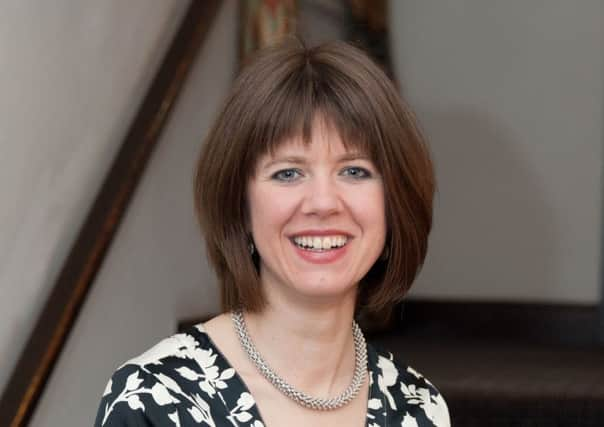Holly Davies: Only more research and better technology will cure Type 1 diabetes


Since then, we have seen tech nological developments allowing people with the condition to not only stay alive, but also have an easier life.
Not only do we have insulin pumps, which deliver insulin to the body through a catheter, but also flash glucose monitoring and other tools to check blood glucose levels.
Advertisement
Hide AdAdvertisement
Hide AdThese products have dramatically improved lives for many people living with type 1, which is why it’s astonishing the Freestyle Libre flash glucose monitoring system – prescribed by local GPs – is not available through all health boards.
Over 30,000 Scots have type 1 diabetes. If they were diagnosed at the age of five, come their 18th birthday they would have endured 50,000 finger prick tests. Each painful test is vital as part of a daily routine, including balancing carbohydrate intake and frequent insulin injections, to prevent life-threatening hypoglycaemia.
If prescription policies were stepped up and rolled out across all local health boards enabling every person who could benefit from one to be entitled to a Freestyle Libre, which gives a glucose reading via a simple sensor, constant finger prick tests can be avoided.
I am a working mum, I have two small children and I have lived with type 1 diabetes for more than 20 years, but having a Freestyle Libre on prescription means I can manage my condition easier and get on with my life as best as I can.
Quite often I hear parents of children with type 1 say that the autoimmune condition has robbed their children of being spontaneous.
Sleepovers are pretty much out of the equation as many parents, for peace of mind, check glucose levels the night and there is the constant worry of them having a hypo – when blood glucose levels go too low, potentially leading to serious consequences.
Or if the doorbell goes and friends are looking for them to come out to play: A child can’t put on their trainers and run out the door – they need to check their glucose levels and if they’re not in the range where they should be, they need to administer insulin, then sit and wait for 15 minutes before doing another check.
Try telling this to an energetic child who just wants to be like their friends and go and play – their face crumples knowing they can’t run straight out the door.
Advertisement
Hide AdAdvertisement
Hide AdThat’s why medical research charities such as JDRF call for support and why the general public, friends and family members play a vital role towards finding treatments and cures.
We are grateful to our fundraisers, many of whom take on physically gruelling tasks to raise money.
We have a prolific police officer from Aberdeenshire who has raised in excess of £40,000 in five years by taking on duathlons and triathlons, while others up and down the country raise thousands for Type One Tea Party and World Diabetes Day celebrations. Our annual balls in Edinburgh and Aberdeen have also raised over £300,000.
These acts of kindness are what is driving us towards a cure and yes, I believe there will be one for type 1 diabetes.
Technological advancements have come on leaps and bounds in the last century, and we have supported the development and testing of a world-leading, UK-based artificial pancreas project which consists of a continuous glucose monitor, an insulin pump and an algorithm, working together to automatically measure and regulate background blood glucose levels.
It promises to significantly reduce the worry and guesswork from managing type 1 diabetes and has the potential to be transformational for those with the condition.
With the country having the one of the highest incidences of type 1 diabetes in the world, we need to put a stop to this condition – which will only happen through continuous development into research and technology.
Holly Davies, Development Manager East Scotland, JDRF